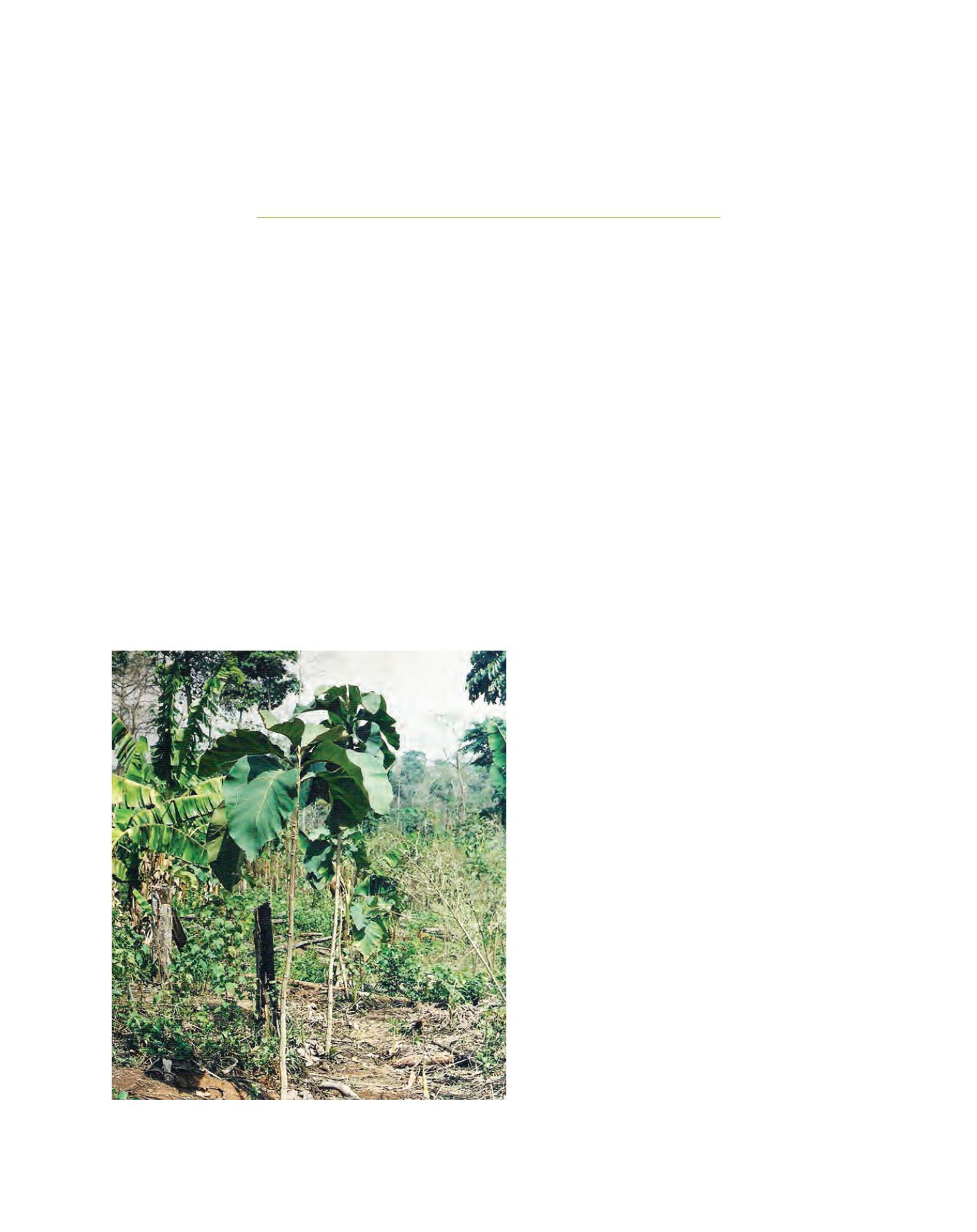

[
] 131
Thirty years of sustainable
forest management in Africa
Ken B. Johm, Manager, Natural Resources & Environment; Olagoke Oladapo, Principal Agro Economist and
Albert Mwangi, Senior Forestry Officer, African Development Bank
F
orests in Africa have multi-faceted uses, incorporating
economic, social and spiritual dimensions. The continent’s
total forest cover is estimated at 674 million hectares,
accounting for 23 per cent of the land area and 17 per cent of
global forest cover.
1
These forests have immense potential to
contribute to the continent’s social and economic development as
they provide a range of ecological, economic and social services,
including the protection of water and soil resources. The African
Development Bank seeks to promote sustainable economic growth
and reduce poverty on the continent and the forestry sector is
an important contributor in achieving these goals. Forest prod-
ucts form the foundation of many local and national economies
across the continent and provide about 6 per cent of GDP in many
African countries.
2
Although most forest products are consumed
domestically, forestry contributes significantly to total exports
in countries like Liberia, Central Africa Republic and Cameroon.
The Food and Agriculture Organization of the United
Nations (FAO) estimates that Africa lost 3.4 million
hectares of forests per year during from 2000-2010, some-
what less than the previous decade, which saw a loss of
4.1 million hectares per year. Despite this improvement,
Africa’s forests are still threatened by a combination of
factors, including agricultural expansion, commercial
harvesting, increased fuelwood collection, inappropri-
ate land and tree tenure regimes, uncontrolled livestock
grazing, accelerated urbanization and industrialization.
The inhabitants of the African forests have over
the years developed a symbiotic relationship with
their immediate environment, using the local plants
and animals to produce foods and medicines without
harming them. Exploitation of forests by the state appa-
ratus is the main reason that degradation has been on
the increase across the continent. The felling of trees and
the opening of roads on the part of forestry companies
encourages poaching, which, along with the increasing
demand for forest products, affects the availability of
wild game and other products which are of interest to
populations living on the fringes of the forests.
Sustaining forestry development in Africa
Sustainable management of African forests has always
been a key agenda item for the Bank, which began inter-
ventions in the continent’s forestry sector in 1978 and
in 1994 adopted a forestry policy to guide its lending to
the sector and to assist its Regional Member Countries
(RMCs) in their efforts to arrest deforestation and environ-
mental degradation. The policy emphasizes the need for
the sustainable management of Africa’s forest resources to
ensure environmental protection, sustainable wood supply
and a steady flow of non-wood forest products. It provides
for a strategic framework to enable the Bank to play an
effective role in the protection, conservation, management
and sustainable use of forests in Africa. The operational
guidelines for the policy were reviewed in 2010 to ensure
that interventions in the sector take cognizance of emerg-
ing issues and lessons learned. To this end, forestry
issues are part of the larger focus of Natural Resources
Management under the current Agriculture Strategy.
The Bank’s policy focuses on forestry, sustainable land
management (SLM) and climate change mitigation and
adaptation. Interventions by the Bank will aim to improve
the management of vital renewable natural resources.
Taungya teak plantations in Ghana Community Forest Management Project. Note the
plantains and cocoyam food crops intercropped with the teak seedlings
Image: African Development Bank
















